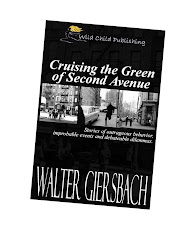Getting ready to go away to college used to be a rite of
passage. When I was a high school senior
in the spring of ‘57, our mailbox at the house in Montclair began filling up
with letters, circulars and catalogs advising me of absolute necessities to buy. This would be a momentous departure from
home. There were requirements for
stepping out into the real world.
The personalized mailings from Wanamaker’s, Macy’s, Bamberger’s
and Gimbel’s advised the class of 1961 that every boy needed at least one dark
suit and one sport jacket, so my parents and I picked a day and dutifully drove
into New York to shop.
My dad first steered us to 23rd Street (23rd Street of all
places!) to a clothier with a cardboard sign advertising “Horehair Petticoats.”
Remember the Archie Andrews fashion when
girls needed to fill out their voluminous skirts? I hope their petticoats were better than their
sign making. They found me a hounds tooth
jacket from that discounter and it was hideous — but sale-priced! Then up to 34th Street to Macy’s for a blue
serge suit. Macy’s was always the go-to
store, knowing Bam’s would have whatever Macy’s didn’t offer. My embarrassment was immense as the
gray-haired sales lady tugged and pulled at my body to make sure the suit
fit. Cuffs would then be altered and the
suit mailed home to avoid the sales tax.
Also needed was a sturdy cardboard mailing box with a
reversible mailing label so I could mail my dirty laundry back from Iowa to New
Jersey for Mom to wash. That exchange
lasted six weeks before I went to the Laundromat and discovered “whites” and
“colors” really should be separated or you’d end up with pink underwear.
Grinnell College, the small school in Iowa where I was
headed, advised freshmen to talk with prospective roommates so everyone in a
threesome at our dormitory didn’t arrive with a 32-watt stereo set. And, I was reminded, males were required to
wear coats and ties for evening meals.
Into the new footlocker (which I still have) went my Olympic
portable typewriter, desk lamp, radio, blankets and a leather notebook with my
initials. My folks’ Samsonite suitcase
was filled with T-shirts (white, no advertising or logos), dress shirts
(button-down), and khakis (with belts in the back).
I was on the top of the world as the 20th Century Limited
pulled out of New York, taking me to a new life. My education began with sartorial splendor,
lasted one semester, and then the bluejeans took over. I was in Iowa, for God’s sake!



